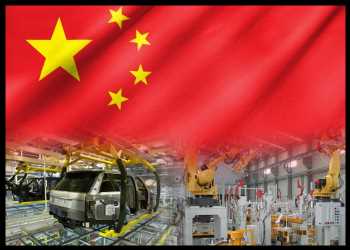China’s manufacturing activity stagnated in March after expanding at the fastest pace in eight months largely due to weak foreign demand.
The Caixin manufacturing Purchasing Managers’ Index fell to 50.0 in March from an eight-month high of 51.6 in February, survey results from S&P Global showed on Monday.
The score signals stable business conditions at the end of the first quarter. However, the official PMI survey data published last week was more upbeat than today’s results.
The NBS manufacturing PMI fell to 51.9 in March from 52.6 in the previous month. Meanwhile, the non-manufacturing PMI, which takes into account the business conditions in services and construction, advanced to 58.2 from 56.3 a month ago.
The relatively moderate and short-lived pick-up in the private manufacturing PMIs in the first quarter suggests that the industrial sector has only received a limited boost from reopening, Capital Economics’ economist Sheana Yue, said.
Manufacturing production increased marginally after rising solidly in the previous month, S&P survey showed. Output rose in line with client demand.
Likewise, new orders grew at a softer pace in March. A number of firms mentioned customer demand and numbers increased amid easing pandemic related measures, while others experienced relatively sluggish sales. At the same time, export business fell back into the contraction zone.
Employment in the manufacturing sector fell slightly in March as respondents indicated that firms decided not to replace voluntary leavers to trim costs. Capacity pressures remained relatively mild with backlogs of work rising at a marginal rate.
Purchasing activity increased moderately for the second straight month with the sustained rise in new work and production. The greater usage of existing inventories due to higher purchasing costs, led to a further reduction in inventories of pre-production items.
On the price front, the survey showed that input costs remained unchanged, there by ending a five-month sequence of inflation. Meanwhile, selling prices fell fractionally as companies indicated that efforts to remain competitive had limited pricing power.
Further, manufacturers remained highly upbeat that output would rise from current levels over the next year.
In March, there were signs of weakening in the rebound seen after the lifting of zero-Covid policy, as reflected by the survey data, Wang Zhe, a senior economist at Caixin Insight Group said.
The economist noted that the foundation for economic recovery is not yet solid. “Looking forward, economic growth will still rely on a boost in domestic demand, especially an improvement in household consumption” said Zhe.
Source: Read Full Article

